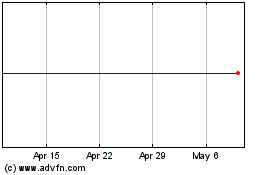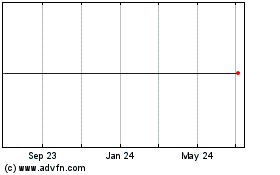By Scott Patterson
Copper bulls are looking smart--for now.
Some of the world's biggest mining companies, which have giant
copper portfolios, are now poised to reap the rewards, with Anglo
American PLC, BHP Billiton Ltd. and Glencore PLC set to report
full- or half-year earnings this week.
The industrial metal has surged more than 30% in the past year,
providing rocket fuel for companies that were staring into the
abyss a year ago. Shares in Anglo and Glencore have more than
tripled in the past 12 months. BHP, which has faced headwinds from
a fatal tailings-dam disaster at one of its mining operations in
Brazil, is up 62%.
Rio Tinto PLC, which is focusing more on its copper business,
offered a preview of how miners' fortunes have flipped to the
upside when it reported earnings earlier this month. The
Anglo-Australian mining giant said it returned to a profit in 2016
with $4.62 billion in earnings, increased its dividend and
announced a $500 million share buyback.
Overall, the miners' results are expected to highlight a
head-snapping turnaround in the past 12 months that has seen the
industry pull back from the precipice of financial disaster.
"The past year has brought some reprieve," said Anglo Chief
Executive Mark Cutifani in a speech this month in South Africa.
"While market watchers were ready to sound a death knell on
mining's prospects, we are still here, stronger than we were
before."
A year ago, miners were haunted by hair-raising worst-case
scenarios in commodities as growth in China stalled, investors
panicked and prices fell to what Barclays called their lowest
levels in 30 years.
Anglo said it would cut its workforce in half. Glencore
frantically raised $4.7 billion from asset sales to trim its debt.
Investors told Glencore executives they worried copper could dip
below $4,000 a metric ton, threatening the stability of the miner's
debt-laden balance sheet.
But while copper flirted with the $4,000 level, it never
breached it. On Friday, copper prices were over $6,000 a metric
ton.
The metal's resurgence partially has been driven by a government
economic stimulus program in China, where over 40% of the world's
copper is consumed.
At the same time, supply has come off the market. This year,
there have been snags at two of the world's largest copper
mines--labor problems at Chile's Minera Escondida, jointly owned by
Rio Tinto and BHP, and a permit dispute with the Indonesian
government for Freeport-McMoRan Inc.'s Grasberg mine. The two mines
account for about 8% to 9% of global copper supply, according to
analysts.
Glencore took direct action to move copper supplies out of the
market, shutting down a large African mine in 2015 in hopes of
refurbishing it and reopening it this year when prices rebound. The
company also shut down some of its production of coal and zinc in a
similar bid to boost prices.
"We've contributed to restoring balance in the supply
fundamentals," Glencore CEO Ivan Glasenberg said in a company tweet
last week.
While most experts say they expect copper prices to remain
strong in the near term, China's economy hangs over the market. The
slightest hiccup there can send painful ripples through the
industry.
"It's China that's driving the market," said Paul Benjamin,
global director of copper markets at Wood Mackenzie.
To be sure, miners' are also buoyed by the surging price of
other metals and commodities such as coal and iron ore. And most
miners' stocks remain well below the nosebleed levels they reached
several years ago at the height of the China-fueled commodity
"supercycle."
But more than the other materials, the resurgence of copper
prices is a boon for strategic bets made recently by big
miners.
Rio Tinto recently said it would advance production at a major
mine in Mongolia that will be one of the world's biggest when it
starts producing in 2020. Rio Tinto has bulked up its copper
profile to help diversify away from iron ore and coal, and CEO
Jean-Sebastian Jacques was installed last year after running the
company's copper division.
Glencore on Monday raised its copper bet with a $534 million
deal to buy out a large partner's stakes in Katanga and another big
Congolese copper mine.
Copper accounted for 33% of Glencore's earnings before interest,
taxes, depreciation and amortization in the first half of 2016--18%
of Anglo's total.
"We see copper moving from a headwind in 2016 to a tailwind in
2017" for Glencore, Credit Suisse said in a Feb. 17 note.
Demand for copper is expected to outpace production in 2017,
putting the market in a supply deficit for the first time in years.
While total copper production is expected to come in at 22.64
million metric tons, consumption is expected to reach 22.92 million
tons, resulting in a deficit of 275,000 tons, according to
commodity consultancy Wood Mackenzie. In 2016, the copper market
was oversupplied by 345,000 tons.
Write to Scott Patterson at scott.patterson@wsj.com
(END) Dow Jones Newswires
February 19, 2017 09:28 ET (14:28 GMT)
Copyright (c) 2017 Dow Jones & Company, Inc.
BHP (NYSE:BBL)
Historical Stock Chart
From Mar 2024 to Apr 2024

BHP (NYSE:BBL)
Historical Stock Chart
From Apr 2023 to Apr 2024
